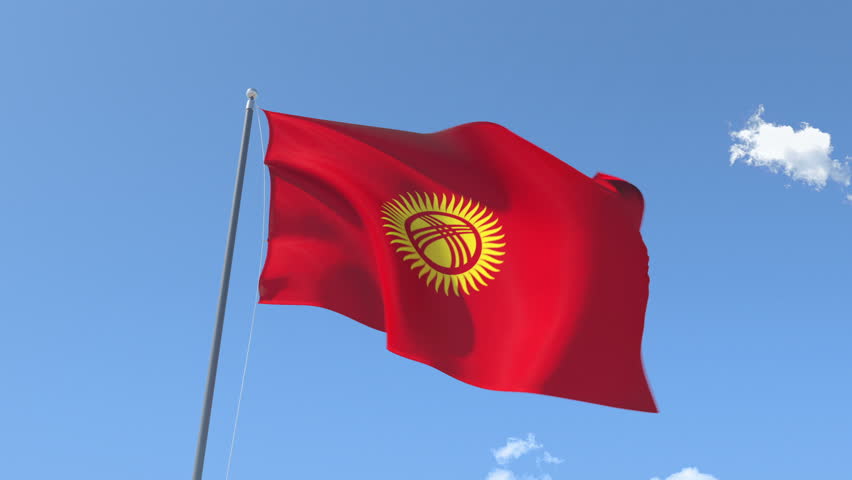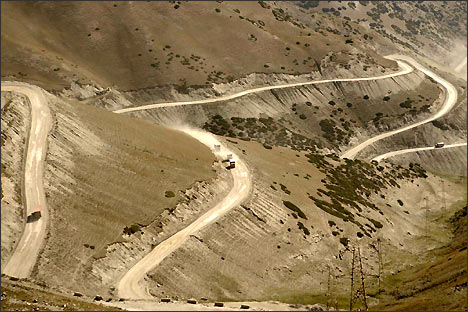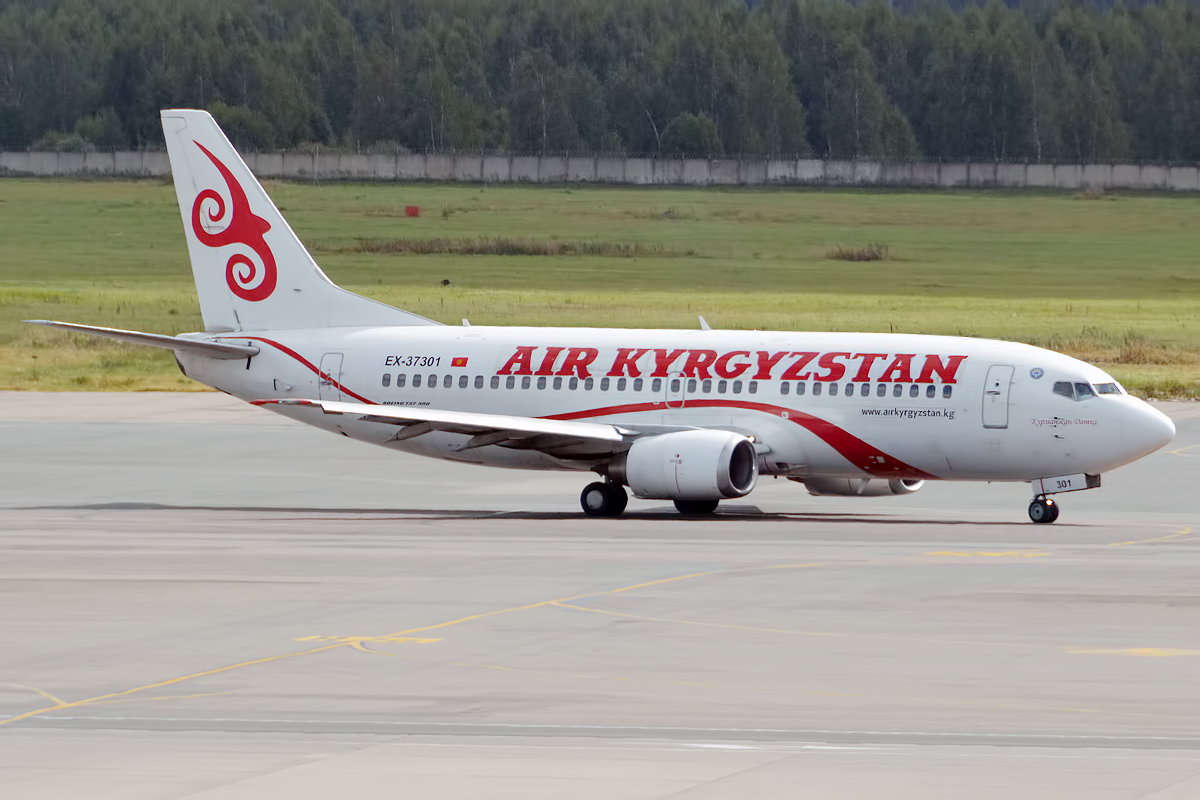Guide to Kyrgystan
About Kyrgyzstan
 Kyrgystan Flag
Kyrgystan Flag
Kyrgyzstan is a country with picturesque mountainous nature. It is located between latitudes of 39 and 43 degrees in north and between longitudes of 69 and 80 degrees in east. Total area of the country is 198.5 thousand square kilometers. The territory of the country is placed between altitudes of 394 m and 7439 m above sea level. Average altitude of the territory is equaled to higher than 2000 meters. About 90% of the territory stands at the altitude of higher than 1500 meters.
Kyrgyzstan has population of 5.3 million people, out of which Kyrgyz are - 66.9%, Uzbeks - 14.14%, Russians - 10.65%. Overall there are more than 80 nationalities living in Kyrgyzstan.
National language is Kirghiz, official language - Russian.
National currency in Kyrgyzstan - Som.
The relief of Kyrgyzstan is mainly mountainous. Most of the territory of Kyrgyzstan is covered by 86 mountain ridges. Wavy plains called - «syrts» are located in the east part of Interior Tien Shan between sloping flank of ranges. The highest peaks Kyrgyzstan are: Pobeda Peak (7439 m), Lenin Peak (7134 m), Khan Tengri Peak (6995 m), Drujba Peak (6800 m).
There are a lot of glaciers on the territory of Kyrgyzstan. Number of officially registered glaciers with area of more than 0.1 square kilometers is equaled to 8 thousand.
The glaciers occupy 4.2% of the territory of Kyrgyzstan. They are situated in the highest mountains parts not lower then 2850-2900 m above forests and alpine meadows.
The largest glaciers are: Enilchek, Kaindy, Korjenevskii, Mushketov, Semenov, Petrov.
Country Details
History & Culture
 Silk Route
Silk RouteOnce a major part of the ancient trade Silk Road between China and Europe, Kyrgyzstan is now an integral part of the economy of Central Asia. But the history of the people populating this land today started long ago and in another area. The Kyrgyz used to be, and partly still are a nomadic nation, and this can be guessed from the national flag, which features the top of a yurt - a traditional Kyrgyz portable house still widely used by its population. The ancestors of the modern Kyrgyz were nomadic shepherds populating vast areas of southern Siberia. During the rise of the Mongols, the Kyrgyz, like many other nations, were integrated in the Mongol Empire. As it started to dissolve into small pieces, many Kyrgyz people headed toward the south. Others stayed in south Siberia and formed the peoples of Khakassia and Altay, today parts of Russia. In the middle of the 19th century, Russia launched a campaign to conquer the territory of modern Kyrgyzstan to protect it from the influence of the neighboring Uzbeks. By 1876, future Kyrgyzstan was integrated into the Russian Empire as one of its southeastern frontiers. After the 1917 Russian revolution, Kyrgyzstan became one of the Soviet republics. Throughout the 1920s and the 1930s, pretty much every aspect of the Kyrgyz traditional lifestyle was subject to reforms.
The Kyrgyz language, part of the Turkic family, underwent a series of profound transformations that ended with the introduction of a standard Cyrillic alphabet. Despite the Soviet authorities' policy of imposing collective sedentary farming and anti-religion activity, the nomadic traditions of the Kyrgyz have survived. In 1991, Kyrgyzstan became an independent nation. In mid-2000s and early 2010s, the country was subject to political instability and has seen two coups, until the first peaceful transition of presidential power took place in 2011. Islam dominates the religious life of Kyrgyzstan, with Orthodox Christianity, Protestantism and other religions also present.
Climate
The climate in the Kyrgyz Republic is mostly continental due to its remoteness from the ocean. Generally, it is recommended to visit the country from May to October. During this time, all routes are open and the weather is quite mild. However, every time of the year has its benefits.
Geography
 The climate is influenced chiefly by the mountains
The climate is influenced chiefly by the mountainsKyrgyzstan is home to some of Eurasia's most spectacular views and locations. Snowy peaks, some higher than 7,000 meters (23,000 ft), forests, unique fresh water lakes and the fact that sometimes it is possible to place it all in one shot, makes Kyrgyzstan the true pearl of Central Asia. The country borders Kazakhstan in the north, Uzbekistan in the west, China in the east and the southeast and Tajikistan in the south, taking the best from each of the neighboring countries' advantages. Kyrgyzstan is a landlocked nation, and can be naturally divided into three parts: the continental northwest with capital Bishkek, the high-attitude east and the low and warm Fergana Valley in the south. The Tien Shan and the Pamir mountain ridges make up most of the Kyrgyz territory.
The 7,400-meter Jengish Chokusu (the Victory Peak), the 7,100-meter Lenin Peak and the 7,000-meter Khan Tengri peak are among the highest ones. Kyrgyzstan does not have access to the sea, however, it has unique high-attitude lakes. One of the top destinations in the whole Central Asia is Issyk-Kol, an enormous mountain lake, second by size only to South America's Titicaca. Despite its geographical diversity, Kyrgyzstan is smooth in terms of logistics. Three times smaller than France, the Central Asian republic is about the area of South Dakota. Different parts of the country can be easily accessed by air or land transport.
How To Get Here
 Manas International Airport
Manas International Airport
Capital Bishkek's Manas International Airport operates regular flights from Moscow, Istanbul, Delhi, Dubai, Shanghai and some other major cities. A flight from London to Bishkek with a 1.5-hour connection in Moscow will take about 10-12 hours. The same flight from New York will take more than 15 hours. It is also possible to reach the country's second-biggest city of Osh in the south by plane from Russia or Bishkek. For advice on best options and timing, do not hesitate contact us.
 An Air Kyrgyzstan Boeing 737-300
An Air Kyrgyzstan Boeing 737-300
Safety
Despite the political turbulence of the past decade, Kyrgyzstan is one of the safest places in Central Asia, if not the safest. The country has scored more than Russia in the Institute of Economics and Peace's 2015 Global Peace Index. There is some crime in big cities, as elsewhere in the world, but the vast majority of the country's territory, located in the mountains, are free from any harm to a foreigner. In fact, it's quite the opposite. A foreigner will inevitably face the traditional hospitality of Kyrgyzstan's nomadic people in its prime, and enjoy it.
Politics
Kyrgyzstan is a democratic, parliamentary republic with strong presidential power. The parliament, unicameral 120-seat Supreme Council, is elected every five years under a proportional system. The Social Democratic Party won the October 2015 election, gaining 38 seats. Other major parliamentary parties include the Respublika - Ata Zhurt bloc, which supports former President Kurbanbek Bakiyev, and the Kyrgyzstan Party. The president is the head of state and is elected for one six-year term. Kyrgyzstan is the member of the Eurasian Economic Union, a post-Soviet economic bloc, which also includes Russia, Belarus, Kazakhstan and Armenia. In the past ten years, the Kyrgyz Republic has seen several waves of political crisis. In 2005, mass protests led to the ouster of President Askar Akayev, who had ruled the county since the crash of the Soviet Union. In 2010, President Kurbanbek Bakiev was ousted after a string of violent protests against his government. Opposition took the power and formed a transitional government. In 2011, Kyrgyzstan saw a peaceful power change. Almazbek Atynbayev, an advocate of closer relations with Russia, has been the president since then.
Money
Kyrgyzstan was one of the first former Soviet republics to introduce its own currency. One Kyrgyzstani Som equals 100 tyiyn. Bad news for the economy and good news for foreigners: the som has lost nearly 20% of its value against the dollar since the beginning of 2015. Keep in mind that the prices were extremely moderate before the crash, and now the republic is even more attractive in terms of costs. As of February 2016, 1 US dollar is equal to about 73 soms and 1 euro to 82 soms

